Feasibility Study on Rapid Determination of Tea Polyphenols in Black Tea by Near Infrared Spectroscopy
-
摘要: 茶多酚作为茶叶品质检测的重要指标之一,利用近红外光谱分析技术对茶多酚含量进行快速检测具有重要意义。本文以144个红茶样品作为研究对象,采取近红外光谱法结合偏最小二乘法(Partial Least Squares, PLS),分别建立粉末状茶叶样品和完整茶叶样品的茶多酚含量的近红外快速分析模型。结果表明,选用SNV+一阶导数+Savitzky-Golay平滑的预处理方法结合PLS建立的预测模型效果最佳,粉末状茶叶样品所建立模型训练集相关系数(Correlation Coefficient,r)为0.9990,训练集均方根误差(Root Mean Square Error of Calibration, RMSEC)为0.165%,预测集的r为0.9243,预测集均方根误差(Root Mean Square Error of Prediction, RMSEP)为0.972%;完整茶叶样品训练集r为0.9967,RMSEC为0.310%,预测集的r为0.9541,RMSEP为0.870%。结果表明,完整茶叶样品所建立的PLS定量分析模型要优于粉末状茶叶所建立的模型。因此,利用近红外光谱技术可实现对红茶中茶多酚含量的快速、无损检测。
-
关键词:
- 红茶 /
- 茶多酚 /
- 近红外光谱 /
- 偏最小二乘法(PLS)
Abstract: Tea polyphenol, a vital indicator used for the detection of tea quality, is of great significance to quickly detect the tea polyphenol content via near infrared spectroscopy. In this paper, the near infrared spectroscopy in combination with partial least squares (PLS) was adopted to establish the rapid analysis models by near infrared for tea polyphenol content of powdered and complete tea samples respectively, using 144 black tea samples as the study objects, revealing that the prediction model established by SNV+first derivative+Savitzky-Golay smoothing combined with PLS had the optimal effect in the results. The correlation coefficient (r) was 0.9990 and the root mean square error of calibration (RMSEC) was 0.165% of the training set, while the r was 0.9243 and the root mean square error of prediction (RMSEP) was 0.972% of the prediction set in powered tea samples. At the same time, the r was 0.9967 and the RMSEC was 0.310% of the training set, while the r was 0.9541 and the RMSEP was 0.870% of the prediction set in complete tea samples. The results showed that the PLS model for complete tea samples was better than that for powdered tea. Therefore, rapid and nondestructive detection of tea polyphenols in black tea can be achieved by near infrared spectroscopy.-
Keywords:
- black tea /
- tea polyphenols /
- near infrared spectroscopy /
- partial least squares(PLS)
-
中国素有“茶叶的故乡”之称,因其繁多的品类、精细的加工、独特的风味等原因一直被人们所喜爱。茶多酚(Tea Polyphenols)是一系列多酚类物质的总称,茶多酚可以与亚铁离子发生化学反应,并最终形成紫色络合物,是红茶中形成苦涩滋味的重要组成部分。科学研究证实,茶多酚有预防衰老、抑制癌细胞生长、降血脂、提高人体免疫力等多种功效[1-3],可以在一定程度上抑制放射性物质进入体内,并可以高效地将放射性物质尽快清除体外。
现如今,对茶多酚含量的测定有许多方法,常用的方法有国标法和色谱法[4-7]。前者试剂制备费时长且消耗量较大,实际的检测结果重现度低、精密性不甚理想,但由于其方便而被人们所普遍使用。后者分析精度高,但检测仪器昂贵,分析过程繁琐复杂,测量速度缓慢,无法满足茶商及广大人民群众对茶叶品质的快速检测和在线分析。
近红外光(Near Infrared,NIR)是一种在可见光(VIS)和中红外(MIR)之间存在的一种电磁辐射波。由于近红外光谱分析技术具有成本低、效率高、无污染、快速等特点,近年来许多国内外研究学者利用近红外光谱技术对茶叶中有效成分进行研究以及茶叶品质的快速检测[8-11],这已成为研究的重点之一。罗一帆等[12]应用人工神经网络的方法建立基于近红外光谱的茶多酚含量的测定模型,均得到较好的实验效果。夏贤明等[13]利用近红外光谱建立了40个绿茶样品中茶多酚的多元回归分析模型,并利用标准化学法来验证近红外光谱法,得到较好的效果。Wang等[14]利用近红外光谱技术结合基于遗传算法的PLS法建立茶多酚含量的定量预测模型,可准确、快速地对其进行预测。对于此类的研究主要集中在对茶饮品、茶汤以及茶叶残渣中的化学物质进行测定,而针对经过采摘、炒青等一系列步骤所制作出的茶叶中茶多酚含量的无损检测研究却相对较少。
本文以144个红茶为样品,主要讨论了采用不同的预处理方法及不同的建模算法建立茶多酚的定量分析模型,探究利用近红外光谱分析技术对茶叶中茶多酚含量进行快速、无损检测,以期为茶叶品质的无损检测提供一种新方法与新思路。
1. 材料与方法
1.1 材料与仪器
144个红茶样本 2019年随机采取的72个夏季红茶样本(分为完整茶叶样本72个和粉末状茶叶样本72个),品种为英红九号,采摘于广东农业科学院茶叶研究所茶叶培养基地。
布鲁克VERTEX 70型傅里叶变换红外光谱仪(图1) BRUKER公司;样品杯 BRUKER公司;DFT-200手提式粉碎机 温岭市林大机械有限公司。
1.2 实验方法
以英红九号红茶为样品,为研究不同样品形态对模型建立及预测效果的影响,分别采集完整茶叶样品和粉末状茶叶样品的光谱数据,利用傅里叶变换红外光谱仪对样品进行光谱数据的采集,傅里叶红外光谱仪原理图如图1所示。实验仪器参数设定为:波数范围为4000~12500 cm−1,分辨率为16 cm−1,扫描次数为32次。共采集茶叶有效样品144个,其中包括完整茶叶样品72个,粉末状茶叶样品72个,完整茶叶样品与粉末状茶叶样品均属于同一茶叶样品的不同物理形态。测试前需要将样品杯擦拭干净,确保样品杯中装入2/3以上样品。
本实验中采用积分球附件,其对大颗粒、不均匀样品的测量具有一定的优势。测量前需要测定背景光谱,将样品杯中的样品适度调整,尽可能将底部光线覆盖,以减少样品间孔隙度差异性的影响。
1.3 数据处理与模型分析
1.3.1 光谱预处理
测定的光谱数据除含有与试样化学成分有关的信息之外,通常还受样品状态、噪声、杂散光等各种因素的影响。在近红外光谱分析时主要使用样品的光谱信息,但由于干扰信息对模型效果存在一定的影响,所以在模型构建前,首先需要对采集到的光谱数据进行光谱预处理,从而降低各种因素的不良影响,常见的光谱预处理方法[15-17]有标准正态变换(Standard Normal Variate Transform, SNV)、多元散射校正(Multiplicative Scatter Ccorrectio, MSC)等。本文中采用SNV结合一阶导数+Savitzky-Golay平滑的方法进行光谱预处理。
1.3.2 建模分析方法
1.3.2.1 主成分回归法(Principal Component Regression, PCR)
该算法不仅能够将模型中的扰动信号加以去除,对光谱中的信号加以筛选,还能够将共线性的重叠信号加以区分,既能增强模型的预测能力,又可进一步提高其精度[18]。
1.3.2.2 偏最小二乘法(Partial Least Squares, PLS)
此方法克服了样本数较小、变量之间存在多重相关性等问题,并且此法可以高效、准确的辨识系统中的信息和干扰噪声。在利用PLS建立模型中,主因子数对模型的效果具有一定的影响,因此在建立模型时,需要选择最佳的主因子数,使模型的效果达到最优[19]。
1.3.2.3 人工神经网络(Artificial Neural Networks, ANN)
人工神经网络具有自学习、自组织、自适应能力、很强的容错能力、分布储存与并行处理信息的功能及高度非线性表达能力,这是其他传统多元校正方法所不具备的[20]。
1.3.2.4 最小二乘支持向量回归(Least Squares Support Vector Machines, LS-SVM)
最小二乘支持向量回归(LS-SVM)是支持向量机(Support Vector Machine, SVM)在二次损失函数形式下的一种扩展,在解决小样本、非线性、高维数等问题中具有较好的优势[21]。
1.3.3 模型评价指标
1.3.3.1 相关系数(Correlation Coefficient,r)
在模型预测中,相关系数r是尤为重要的指标之一。r的取值范围在−1~1之间,且随着r逐渐趋近于1,表示对应特征与其化学值的相关性越强,该特征对化学值越敏感。
r=N∑i=1(xi−∧x)(yi−∧y)√N∑i=1(xi−∧x)2⋅√N∑i=1(yi−∧y)2 (1) 式中:
x 、y 是两个变量;∧x 、∧y 是两个变量x 、y 的相应平均值;N 为样本数。1.3.3.2 训练集均方根误差(Root Mean Square Error of Calibration,RMSEC)
RMSEC属于误差的一种,此误差越大,说明模型的效果有待提高,仍需进一步改进。
RMSEC=√n∑i=1(yi−∧yi)2n (2) 1.3.3.3 预测集均方根误差(Root Mean Square Error of Prediction,RMSEP)
在模型建立后,随着RMSEP的降低,模型的预测效果将得到提高,此误差越小越好。
RMSEP=√m∑j=1(yj−∧yj)2m (3) 式(1)~(3)中:
n /m 为训练集/预测集样本数量;yi /yj 为训练集/预测集第i /j 个样本的真实值;∧yi /∧yj 为训练集/预测集第i /j 个样本的预测值。r、RMSEC和RMSEP都是评价模型优劣的重要指标[22]。通常情况下,当模型的相关系数在一定的范围内(相关系数的取值范围−1~1)越大,说明模型的相关性越好。与此同时,随着RMSEC和RMSEP的逐渐降低,所建立的预测模型被逐渐的修正与完善,最终模型效果将得到提高,实用性将更加的理想。
2. 结果与分析
2.1 光谱数据的采集
茶叶的外形、颜色等是茶叶品质优劣的外在表现,而近红外光谱图则是茶叶品质优劣的内在表现,如图2所示。虽然茶叶的品种繁多,生茶产地也各不相同,但采集到的近红外光谱图却大致相似,这是由于茶叶中的化学成分大致相同,近红外光谱所吸收的基团也大致相似,但当所处的环境发生变化时,便会导致峰位出现变化,最终影响近红外光谱图的呈现。不同的茶叶中包含着各不相同的化学成分,随着时间、温度、湿度等因素的干扰,其化学成分的含量也会受到一定的影响[23-24]。
2.2 异常样本剔除和样本划分
本实验中按照KS法以5:1的比例划分样品的训练集和预测集。从72个红茶样本中选取56个样品作为训练集,11个样品作为预测集,其中5个样品存在严重的偏差,将其剔除,从而提高模型建立的精准性。
广东农业科学院茶叶研究所使用国标法(GB/T8313-2018)对红茶样品中茶多酚的含量进行测量,将测出的数值用于光谱数据的分析,茶多酚的含量范围为8.78%~25.79%(表1)。
表 1 20组不同浓度的茶多酚含量(%)Table 1. 20 groups of tea polyphenols at different concentrations (%)红茶样本编号 茶多酚含量 红茶样本编号 茶多酚含量 H-001 12.89 H-045 11.25 H-010 19.71 H-048 13.84 H-015 14.97 H-053 22.38 H-016 14.35 H-057 19.22 H-021 13.93 H-059 20.66 H-023 25.79 H-062 11.51 H-031 20.17 H-070 18.64 H-034 9.67 H-076 8.78 H-036 12.80 H-083 18.96 H-043 10.02 H-088 14.64 2.3 光谱预处理方法的选择
仪器的响应、杂散光、样品颗粒尺寸变化等一系列与待测样品无关的外界因素,也均可能直接对近红外光谱数据产生一定程度上的影响,最终会造成近红外光谱图像上出现基线漂移或倾斜等现象。对原始的光谱数据进行各种不同的预处理,却能够大大地提高模型精确度和可信度,还可以提高建模效率[25]。
如图3所示,实验中首先通过平滑处理对茶叶的近红外光谱图像进行预处理。将进行平滑处理前后得到的近红外光谱吸收图进行横向比较,可明显发现在进行平滑处理操作后得到的光谱曲线变得比较均匀、平滑,去除了噪声、样品分布不均衡等外界各种干扰因素带来的影响,同时由于平滑处理点数的显著提高,能够更有效地减少光谱数据中存在的各种无用信息,增强光谱图中的有用信息。
如图4所示,导数处理不仅可以降低基线漂移等因素的干扰,还可提供分辨率更高、光谱轮廓更清晰的光谱图。对茶叶光谱数据分别进行不同阶次的导数处理,一阶导数以及二阶导数的预处理都在一定程度上影响到了光谱图像中的吸收峰,随着阶次的不断增加,光谱图中的噪声信号逐渐被放大。
平滑处理可以减少随机噪声的干扰,提高信噪比;而导数处理可以消除基线漂移的影响,经过对近红外光谱吸收图的对比分析,S-G平滑+一阶导数的光谱预处理方法效果最佳,如图5所示。从图中可以看出,4000~10000 cm−1区间存在的吸收峰较多,而10000~12000 cm−1区间经过预处理后较为平滑,无吸收峰。因此,选取波段范围在4058.5~8865.1 cm−1之间的光谱信息,以茶多酚含量为基础,分别对完整茶叶样品和粉末状茶叶样品进行建模分析。
2.4 主成分数的选择
在使用PLS法进行建模分析时,必须先设定出最佳的主成分数。若主成分数过低,则光谱中部分有用的信息将会被剔除,出现模型欠拟合的现象;若主成分太多,则可能会出现过拟合的现象,尽管对训练集的效果非常好,但也可能会因此严重地影响预测集的预测效果[26]。主成分数的选择对模型的建立与预测尤为重要,本文中完整红茶样品所选取的主成分数为4,粉末状红茶样品所选取的主成分数为6,如图6所示。
2.5 茶多酚定量分析模型的建立与预测
从初始采集到的光谱数据中可以看出,波峰位置包含大量的有用信息,而其余部分包含杂散光、噪声等干扰信息,因此需要对其进行光谱预处理。经数据分析得出,SNV+一阶导数+S-G平滑的光谱预处理方法要优于原始光谱和其他处理方式,因此,选择SNV+一阶导数+S-G平滑相结合的预处理方法。
2.5.1 基于PCR和PLS线性建模算法分析
如表2所示,经过光谱预处理后,分别采用偏最小二乘法(PLS)和主成分回归法(PCR)建立茶多酚含量的定量分析模型。
表 2 PLS和PCR建模结果Table 2. PLS and PCR modeling results样本类别 方法 主因子数 训练集 预测集 RMSEC(%) 相关系数r RMSEP(%) 相关系数r 粉末状样品 PLS+SNV+无 6 1.55 0.9020 1.46 0.8468 PLS+SNV+一阶导数+S-G平滑 6 0.165 0.9990 0.972 0.9243 PLS+SNV+二阶导数+S-G平滑 6 0.118 0.9995 1.65 0.7549 PCR+SNV+无 无 1.57 0.8994 1.42 0.8540 PCR+SNV+一阶导数+S-G平滑 无 1.97 0.8369 1.15 0.9017 PCR+SNV+二阶导数+S-G平滑 无 2.37 0.7517 1.78 0.7371 完整样品 PLS+SNV+无 4 2.27 0.8068 1.88 0.8590 PLS+SNV+一阶导数+S-G平滑 4 0.310 0.9967 0.870 0.9541 PLS+SNV+二阶导数+S-G平滑 4 0.166 0.9991 2.52 0.7875 PCR+SNV+无 无 2.33 0.7971 1.55 0.8899 PCR+SNV+一阶导数+S-G平滑 无 2.51 0.7578 1.38 0.9085 PCR+SNV+二阶导数+S-G平滑 无 3.18 0.5633 2.50 0.6719 根据评价指标可知,相关系数r的绝对值越接近于1,模型的相关性越好;预测集均方根误差(RMSEP)越小,表示模型预测的效果越理想。从表2中可以看出,PLS建立的茶多酚定量分析模型要优于PCR所建立的模型。
本实验分别利用两种不同形态茶叶样品建立茶多酚定量分析模型,因样本形态的差异及建模方法的不同,从而模型的预测也显现出明显的差异。如表2所示,经过处理的茶叶样品(粉末状茶叶样品)所建立的PLS模型训练集的相关系数为0.9990,RMSEC为0.165%;预测集的相关系数为0.9243,RMSEP为0.972%。未经预处理的红茶样品(完整的茶叶样品)所建立的PLS模型的训练集相关系数为0.9967,RMSEC为0.310%;预测集的相关系数为0.9541,RMSEP为0.870%,从图中可以看出粉末状样本训练集效果更好,而完整茶叶样本预测集的效果更好,相关系数更高,RMSEP更小,可能是完整样本更能体现其光谱特性,完整茶叶的外形、均匀度均未对建模结果产生明显的干扰。
综合比较,由完整茶叶样品所构建的茶多酚的模型预测效果要略微优于粉末状茶叶样品所构建的模型,如图7所示。完整茶叶样品所建立的模型预测集的相关系数为0.9541,RMSEP为0.870%;粉末状茶叶样品所建立的模型预测集的相关系数为0.9243,RMSEP为0.972%,虽二者形态存在明显不同,但完整茶叶样品相关系数更高,真实值与预测值之间均具有较好的相关性,均方根误差更小。
2.5.2 基于ANN和LS-SVM非线性建模算法分析
本文采用ANN网络结构,红茶的近红外光谱数据作为输入层,茶多酚含量的化学值作为输出层,选用Sigmoid函数,用于隐藏层神经元的输出,初始学习率为0.01,最大迭代次数为100。在ANN模型构架之前,采用主成分分析(PCA)对数据进行降维,提取数据的主要特征分量。不同的主成分数会严重影响网络模型的性能,因此,选择最小的训练集均方根误差(RMSEC)的值对应的主成分数。从图8中可以看出,ANN人工神经网络所构建的茶多酚含量的预测模型效果并未达到理想值,这可能是由于数据集样本太少,鲁棒性欠佳等原因所导致。
表3是基于LS-SVM非线性模型建立的茶多酚含量的定量分析预测模型,从表中可以看出,无论是原始茶叶样本还是粉末状茶叶样本,训练集的相关系数要明显高于预测集的相关系数,而训练集的均方根误差要明显低于预测集。与ANN模型相比,此模型的建模效果相对较优。
表 3 基于LS-SVM对茶叶样本茶多酚含量的预测结果Table 3. Prediction results of tea polyphenol content in tea samples based on LS-SVM样本类别 训练集 预测集 相关系数r RMSEC(%) 相关系数r RMSEP(%) 完整茶叶样本 0.7440 0.9832 0.6000 1.0136 粉末状茶叶样本 0.7936 0.8875 0.6280 1.0143 2.5.3 建模算法的对比分析
本文采用PCR、PLS线性建模算法和ANN、LS-SVM非线性建模算法,分别建立红茶中茶多酚含量的定量分析模型,线性建模算法更适用于茶叶中茶多酚含量的定量分析,而非线性模型的预测模型效果并不理想。此外,综合比较完整茶叶样本所建立的茶多酚含量的定量分析模型效果更优,完整茶叶样本的外形、均匀度均未对建模结果产生明显的干扰。因此,利用近红外光谱技术可实现对茶叶品质的快速、无损检测。
图9中,分别展示了线性建模算法和非线性建模算法所建立模型的相关系数r和均方根误差,由图9(a)可知,PLS模型的训练集和预测集都具有较高的相关性,而从图9(b)可知,ANN模型的RMSEC和RMSEP均较低,但是相关系数却并理想。综合比较,PLS模型更适用于茶叶中茶多酚含量的定量分析。
3. 结论与讨论
近年来,随着小康社会的逐渐实现以及人们生活水平的逐步提高,人们对茶叶质量的需求也愈来愈高,不仅要实现有茶可喝,更要实现有高品质茶可品。茶多酚作为茶叶品质检测的重要指标之一,其浓度则直接影响着茶的色、香、味及其功效。王胜鹏等[27]应用排列组合原理和偏最小二乘法(PLS)建立两种背景下单光程和多光程组合茶多酚近红外预测模型,并用t-test检验模型预测效果。结果表明,通过排列组合获得的多光程的茶多酚近红外模型具有比单光程模型更好的预测精度和模型稳定性。周昌海等[28]利用近红外光谱技术对铁观音茶多酚含量模型进行定量分析,通过不同的光谱预处理结合偏最小二乘法(PLS)在特定吸收峰波段建立茶多酚含量的定量分析模型,在1872 nm处的相关系数为0.9624,均方根误差RMSEP为0.01648%,模型的预测集精度较好。
本文运用近红外光谱分析技术,选用线性与非线性算法结合多种光谱预处理方法建立了红茶样品茶多酚含量的定量分析模型。与上述研究相比,本文采用多种光谱预处理方法使光谱信息更加明确,并且增加了非线性的建模算法,不仅证实了PLS算法更适合于茶多酚含量的定量分析模型,还研究了样品形态对建模结果的影响。实验结果显示,基于PLS建立的完整茶叶样本的预测集相关系数为0.9541,RMSEP为0.870%;由粉末状样本建立的模型预测集相关系数为0.9243,RMSEP为0.972%,PLS模型更适用于完整茶叶样本中茶多酚含量的定量分析。因此,基于PLS所建立的预测模型预测性能更优,可以更好地对茶叶中茶多酚含量进行预测,从而实现利用近红外光谱技术对茶叶品质的快速、无损检测。
本文所建立的茶多酚含量检测模型对其他红茶产品具有一定的参考价值。如果要进一步拓展该技术在实际红茶中的运用,就必须增加样本量,以便于进一步提高模型估计的精度和稳定性;后期继续通过对算法的不断改进与优化,降低模型的预测误差,提高模型的性能,同时将对红茶中的其他主要品质成分进行建模分析,进一步实现茶叶品质评价的准确性、便捷性与客观性。
-
表 1 20组不同浓度的茶多酚含量(%)
Table 1 20 groups of tea polyphenols at different concentrations (%)
红茶样本编号 茶多酚含量 红茶样本编号 茶多酚含量 H-001 12.89 H-045 11.25 H-010 19.71 H-048 13.84 H-015 14.97 H-053 22.38 H-016 14.35 H-057 19.22 H-021 13.93 H-059 20.66 H-023 25.79 H-062 11.51 H-031 20.17 H-070 18.64 H-034 9.67 H-076 8.78 H-036 12.80 H-083 18.96 H-043 10.02 H-088 14.64 表 2 PLS和PCR建模结果
Table 2 PLS and PCR modeling results
样本类别 方法 主因子数 训练集 预测集 RMSEC(%) 相关系数r RMSEP(%) 相关系数r 粉末状样品 PLS+SNV+无 6 1.55 0.9020 1.46 0.8468 PLS+SNV+一阶导数+S-G平滑 6 0.165 0.9990 0.972 0.9243 PLS+SNV+二阶导数+S-G平滑 6 0.118 0.9995 1.65 0.7549 PCR+SNV+无 无 1.57 0.8994 1.42 0.8540 PCR+SNV+一阶导数+S-G平滑 无 1.97 0.8369 1.15 0.9017 PCR+SNV+二阶导数+S-G平滑 无 2.37 0.7517 1.78 0.7371 完整样品 PLS+SNV+无 4 2.27 0.8068 1.88 0.8590 PLS+SNV+一阶导数+S-G平滑 4 0.310 0.9967 0.870 0.9541 PLS+SNV+二阶导数+S-G平滑 4 0.166 0.9991 2.52 0.7875 PCR+SNV+无 无 2.33 0.7971 1.55 0.8899 PCR+SNV+一阶导数+S-G平滑 无 2.51 0.7578 1.38 0.9085 PCR+SNV+二阶导数+S-G平滑 无 3.18 0.5633 2.50 0.6719 表 3 基于LS-SVM对茶叶样本茶多酚含量的预测结果
Table 3 Prediction results of tea polyphenol content in tea samples based on LS-SVM
样本类别 训练集 预测集 相关系数r RMSEC(%) 相关系数r RMSEP(%) 完整茶叶样本 0.7440 0.9832 0.6000 1.0136 粉末状茶叶样本 0.7936 0.8875 0.6280 1.0143 -
[1] 黄玉梅. 谈谈茶叶中茶多酚的药理保健功效[J]. 农业考古,2010(5):255−258. [HUANG Yumei. Talk about the health care effect of tea polyphenols in tea[J]. Agricultural Archaeology,2010(5):255−258. [2] 陈宗懋. 20世纪茶与健康研究的主要进展[J]. 中国茶叶,2001(4):8−10. [CHEN Zongmao. Major advances in tea and health research in the 20th century[J]. Chinese Tea,2001(4):8−10. doi: 10.3969/j.issn.1000-3150.2001.04.002 [3] 陈淑珍, 甄永苏. 茶多酚的分子作用靶点及其在抗肿瘤药物实验治疗中的作用[J]. 药学学报,2013,48(1):1−7. [CHEN Shuzhen, ZHEN Yongsu. Molecular targets of tea polyphenols and their role in experimental treatment of antitumor drugs[J]. Acta Pharmaceutica Sinica,2013,48(1):1−7. [4] 陈磊. 不同种类茶叶中茶多酚含量的测定和分析[J]. 食品安全导刊,2021(25):71,73. [CHEN Lei. Determination and analysis of tea polyphenols in different kinds of tea[J]. China Food Safety Magazine,2021(25):71,73. [5] 于然, 李晔, 金丽华, 等. 高效液相色谱法同时测定茶叶中6种茶多酚含量[J]. 中国食品添加剂,2021,32(5):74−82. [YU Ran, LI Ye, JIN Lihua, et al. Simultaneous determination of 6 kinds of tea polyphenols in tea by HPLC[J]. China Food Additives,2021,32(5):74−82. [6] 朱虹. 茶叶中茶多酚的检测方法研究[J]. 福建茶叶,2019,41(8):4. [ZHU Hong. Study on the detection method of tea polyphenols in tea[J]. Tea In Fujian,2019,41(8):4. doi: 10.3969/j.issn.1005-2291.2019.08.003 [7] SIRIPAT S, DARANEE P. Flow injection analysis-spectrophotometry for rapid determination of total polyphenols in tea extracts[J]. Journal of Flow Injection Analysis,2018,25(1):61−64.
[8] 傅海军, 周树斌, 武小红, 等. 茶叶傅里叶近红外光谱的混合模糊极大熵聚类分析[J]. 光谱学与光谱分析,2019,39(11):3465−3469. [FU Haijun, ZHOU Shubin, WU Xiaohong, et al. Mixed fuzzy maximum entropy clustering analysis of Fourier near infrared spectra of tea leaves[J]. Spectroscopy and Spectral Analysis,2019,39(11):3465−3469. [9] 圣阳, 焦俊, 滕燕, 等. 基于卷积神经网络和近红外光谱的茶叶品种和等级鉴别[J]. 分析科学学报,2022,38(5):552−560. [SHENG Yang, JIAO Jun, TENG Yan, et al. Identification of tea varieties and grades based on convolutional neural network and near infrared spectroscopy[J]. Journal of Analytical Science,2022,38(5):552−560. doi: 10.13526/j.issn.1006-6144.2022.05.004 [10] 王胜鹏, 高士伟, 滕靖, 等. 近红外光谱技术在茶叶中的研究进展[J]. 华中农业大学学报,2021,40(5):226−232. [WANG Shengpeng, GAO Shiwei, TENG Jing, et al. Research progress of near infrared spectroscopy in tea[J]. Journal of Huazhong Agricultural University,2021,40(5):226−232. doi: 10.13300/j.cnki.hnlkxb.2021.05.027 [11] LUO Yu, LI Wenlong, QU Haibin. Research progress on method validation of near infrared spectroscopy in quantitative analysis[J]. China Journal of Chinese Material Medica,2017,41(19):3515−3519.
[12] 罗一帆, 郭振飞, 朱振宇, 等. 近红外光谱测定茶叶中茶多酚和茶多糖的人工神经网络模型研究[J]. 光谱学与光谱分析,2005(8):1230−1233. [LUO Yifan, GUO Zhenfei, ZHU Zhenfei, et al. Study on Artificial neural network model for determination of tea polyphenols and tea polysaccharides by near infrared spectroscopy[J]. Spectroscopy and Spectral Analysis,2005(8):1230−1233. doi: 10.3321/j.issn:1000-0593.2005.08.017 [13] 夏贤明, 丁宁. 用近红外光谱法检测绿茶中品质成分的研究[J]. 分析化学,1991(8):945−948. [XIA Xianming, DING Ning. Study on the determination of quality components in green tea by near infrared spectroscopy[J]. Chinese Journal of Analytical Chemistry,1991(8):945−948. doi: 10.3321/j.issn:0253-3820.1991.08.001 [14] WANG Shengpeng, LIU Panpan, FENG Lin, et al. Rapid determination of tea polyphenols content in Qingzhuan tea based on near infrared spectroscopy in conjunction with three different PLS algorithms[J]. Food Science and Technology,2022,42:94322. doi: 10.1590/fst.94322
[15] 李尚科, 杜国荣, 李跑, 等. 基于近红外光谱技术和优化预处理方法的豆浆粉无损鉴别研究[J]. 食品研究与开发,2020,41(17):144−150. [LI Shangke, DU Guorong, LI Pao, et al. Nondestructive identification of soybean milk powder based on near infrared spectroscopy and optimized pretreatment method[J]. Food Research and Development,2020,41(17):144−150. doi: 10.12161/j.issn.1005-6521.2020.17.023 [16] 左旭丽, 潘秀珍, 耿泽宇, 等. 经19种光谱预处理筛选建立3种连翘叶茶近红外定性定量模型[J]. 食品安全质量检测学报,2022,13(19):6431−6440. [ZUO Xuli, PAN Xiuzhen, GENG Zeyu, et al. The near-infrared qualitative and quantitative models of 3 kinds of forsythia leaf tea were established by 19 kinds of spectral pretreatment and screening[J]. Journal of Food Safety & Quality,2022,13(19):6431−6440. doi: 10.19812/j.cnki.jfsq11-5956/ts.2022.19.032 [17] DU Zhenjiao, TIAN Wenfei, Tilley Michael, et al. Quantitative assessment of wheat quality using near-infrared spectroscopy: A comprehensive review[J]. Comprehensive Reviews in Food Science and Food safety,2022,21(3):2956−3009. doi: 10.1111/1541-4337.12958
[18] 张津源, 张德贤, 张苗. 基于连续投影算法的小麦蛋白质含量近红外光谱预测分析[J]. 江苏农业学报,2019,35(4):960−964. [ZHANg Jinyuan, ZHANG Dexian, ZHANG Miao. Prediction and analysis of wheat protein content by near infrared spectroscopy based on continuous projection algorithm[J]. Jiangsu Journal of Agricultural Sciences,2019,35(4):960−964. doi: 10.3969/j.issn.1000-4440.2019.04.030 [19] ZHUANG Xingang, WANG Lili, CHEN Qi, et al. Identification of green tea origins by near-infrared(NIR) spectroscopy and different regression tools[J]. Science China(Technological Sciences),2017,60(1):84−90. doi: 10.1007/s11431-016-0464-0
[20] 余代鑫, 郭盛, 张霞, 等. 近红外光谱技术结合化学计量学和机器学习算法的干姜产地溯源研究[J]. 中国中药杂志,2022,47(17):4583−4592. [YU Daixin, GUO Sheng, ZHANG Xia, et al. Origin tracing of dried ginger by near infrared spectroscopy combined with stoichiometry and machine learning algorithm[J]. China Journal of Chinese Materia Medica,2022,47(17):4583−4592. doi: 10.19540/j.cnki.cjcmm.20220514.103 [21] 丁海泉, 温江北, 高洪智, 等. 最小二乘支持向量机用于人参皂苷近红外光谱分析研究[J]. 现代农业装备,2021,42(5):17−22. [DING Haiquan, WEN Jiangbei, GAO Hongzhi, et al. The least square support vector machine is used for near infrared spectroscopy analysis of ginsenosides[J]. Modern Agricultural Equipment,2021,42(5):17−22. doi: 10.3969/j.issn.1673-2154.2021.05.003 [22] 崔蕴涵, 许金钗, 方智毅, 等. 莲子含水率近红外光谱检测模型构建[J]. 食品研究与开发,2021,42(18):130−135. [CUI Yunhan, XU Jinchai, FANG Zhiyi, et al. Construction of near-infrared spectroscopy detection Model for water content of lotus seed[J]. Food Research and Development, Food Research and Development,2021,42(18):130−135. doi: 10.12161/j.issn.1005-6521.2021.18.019 [23] 刘淑文, 游静萍, 李云冰, 等. 影响茶叶中茶多酚含量的因素分析[J]. 福建茶叶,2022,44(2):18−21. [LIU Shuwen, YOU Jingping, LI Yunbing, et al. Analysis on influencing factors of tea polyphenol content in tea[J]. Tea in Fujian,2022,44(2):18−21. doi: 10.3969/j.issn.1005-2291.2022.02.007 [24] LI Shiming, ZHANG Liang, WAN Xiaochun, et al. Focusing on the recent progress of tea polyphenol chemistry and perspectives[J]. Food Science and Human Wellness,2022,11(3):437−444. doi: 10.1016/j.fshw.2021.12.033
[25] 第五鹏瑶, 卞希慧, 王姿方, 等. 光谱预处理方法选择研究[J]. 光谱学与光谱分析,2019,39(9):2800−2806. [[DI Wupengyao, BIAN Xihui, WANG Zifang, et al. Study on the selection of spectral preprocessing methods[J]. Spectroscopy and Spectral Analysis,2019,39(9):2800−2806. [26] 苗雪雪, 苗莹, 龚浩如, 等. 不同偏最小二乘法的近红外光谱技术测定大米中水分的研究[J]. 分析科学学报,2019,35(5):643−649. [MIAO Xuexue, MIAO Ying, GONG Haoru, et al. Determination of moisture in rice by near infrared spectroscopy with different partial least squares method[J]. Journal of Analytical Science,2019,35(5):643−649. [27] 王胜鹏, 龚自明, 何远军, 等. 背景和光程对茶多酚含量近红外预测模型的影响[J]. 华中农业大学学报,2015,34(2):120−124. [WANG Shengpeng, GONG Ziming, HE Yuanjun, et al. Effect of background and optical path on near-infrared prediction model of tea polyphenol content[J]. Journal of Huazhong Agricultural University,2015,34(2):120−124. [28] 周昌海, 周海军. 铁观音中茶多酚含量的近红外光谱检测模型分析[J]. 宜宾学院学报,2019,19(12):121−124. [ZHOU Changhai, ZHOU Haijun. Analysis of tea polyphenols content in Tieguanyin by near infrared spectroscopy model[J]. Journal of Yibin University,2019,19(12):121−124. -
期刊类型引用(2)
1. 邹泽宇,隋青,王凤丽,陈东杰,郭风军,张长峰. 果蔬类食品货架期的预测方法及研究进展. 中国果菜. 2025(02): 9-17 .  百度学术
百度学术
2. 刘培琴,胡超琼,邹燕,杨潇,陈祥贵,冯德建,叶善蓉,黄玉坤. HPLC-MS/MS法测定茶叶中儿茶素类、茶黄素类物质. 中国测试. 2024(07): 63-69 .  百度学术
百度学术
其他类型引用(1)






 下载:
下载:




















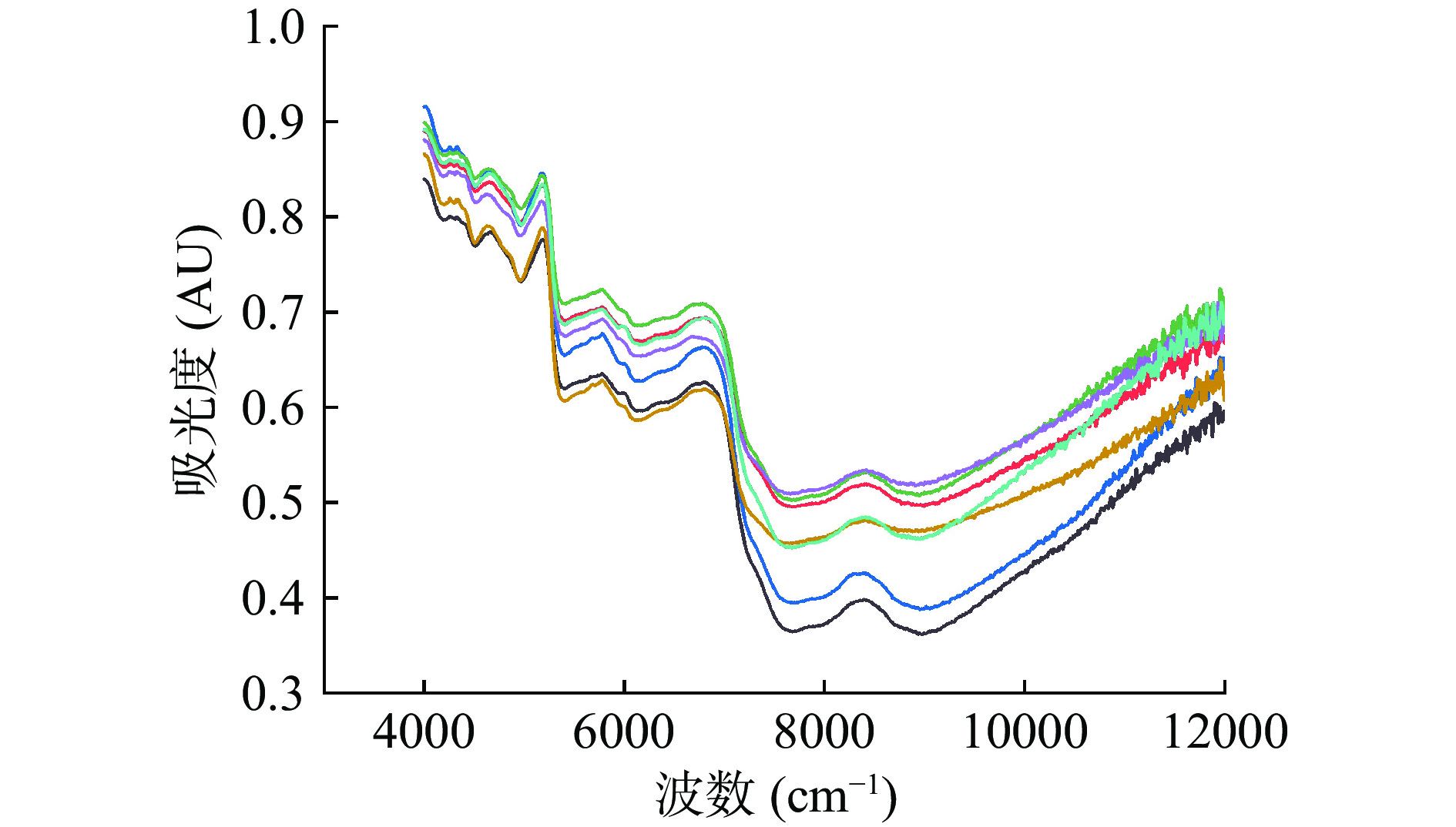
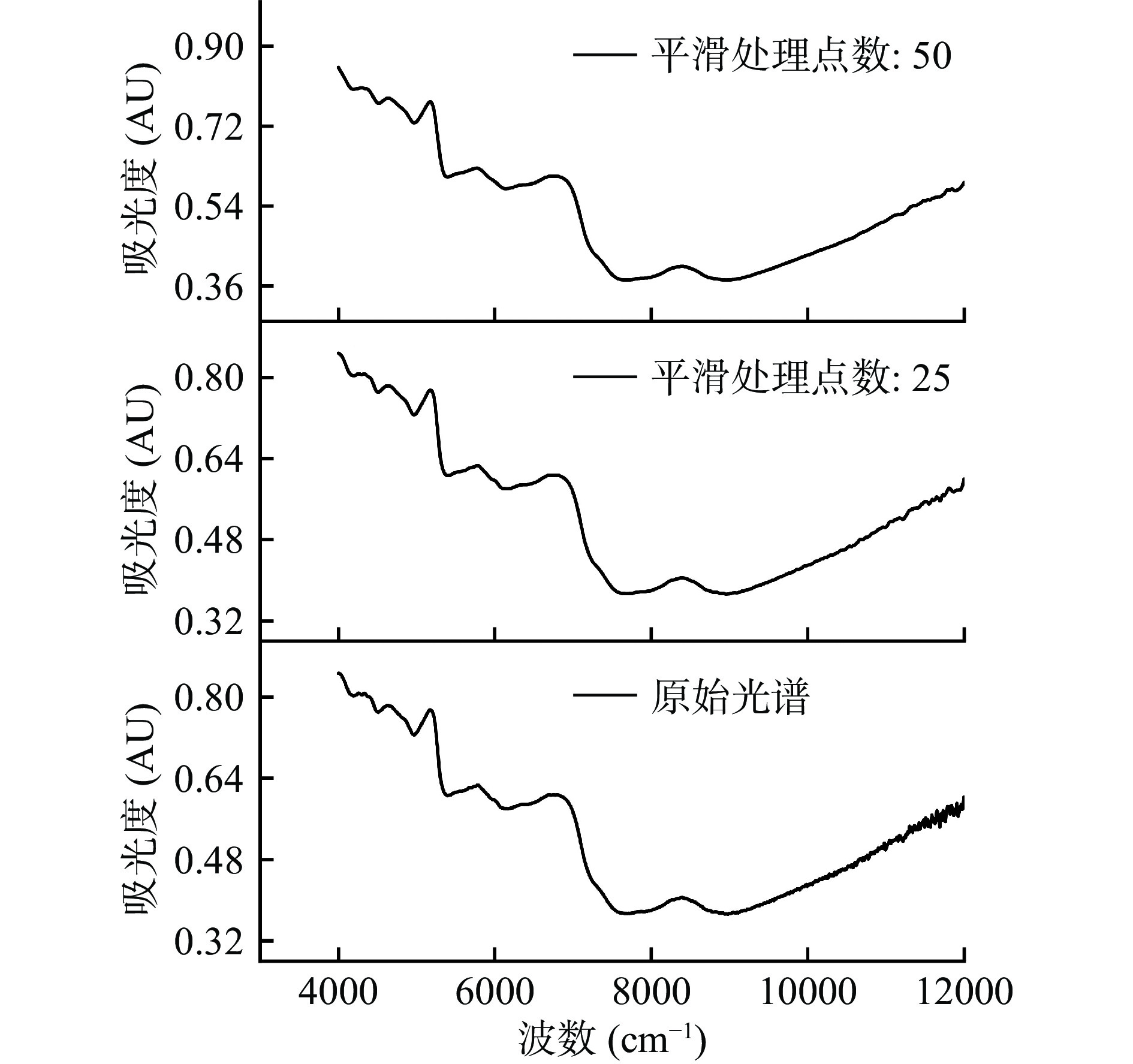
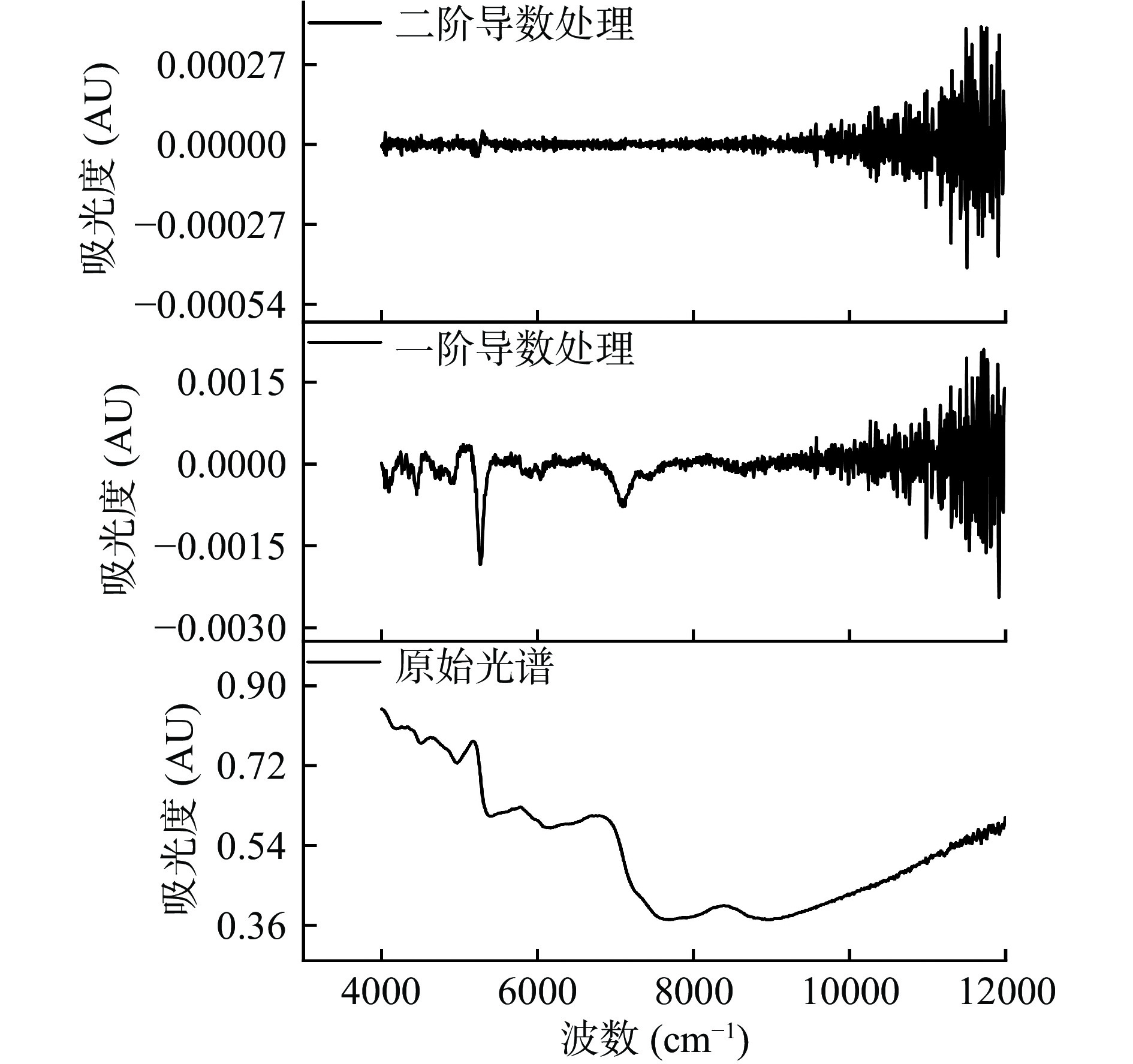
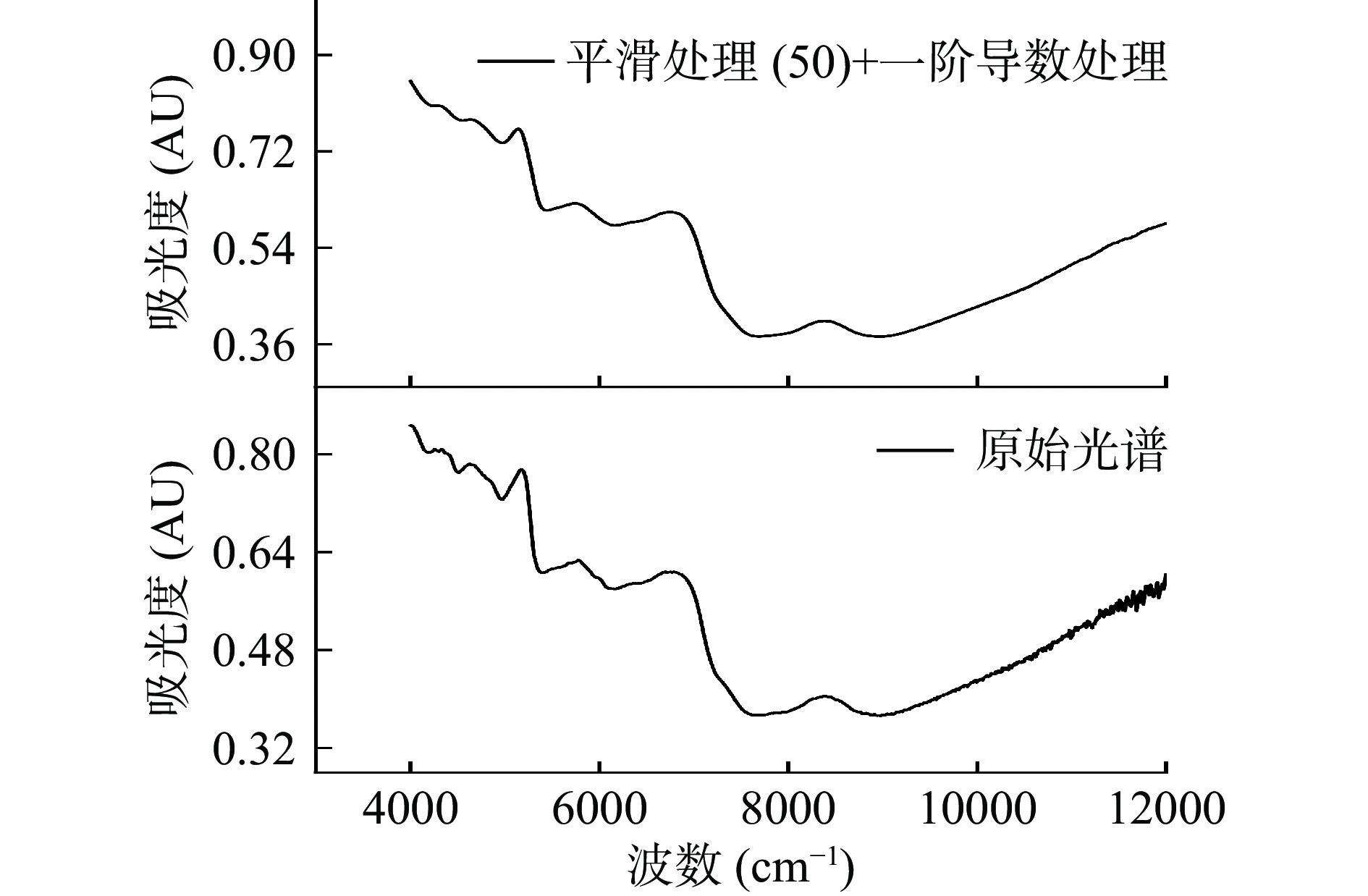
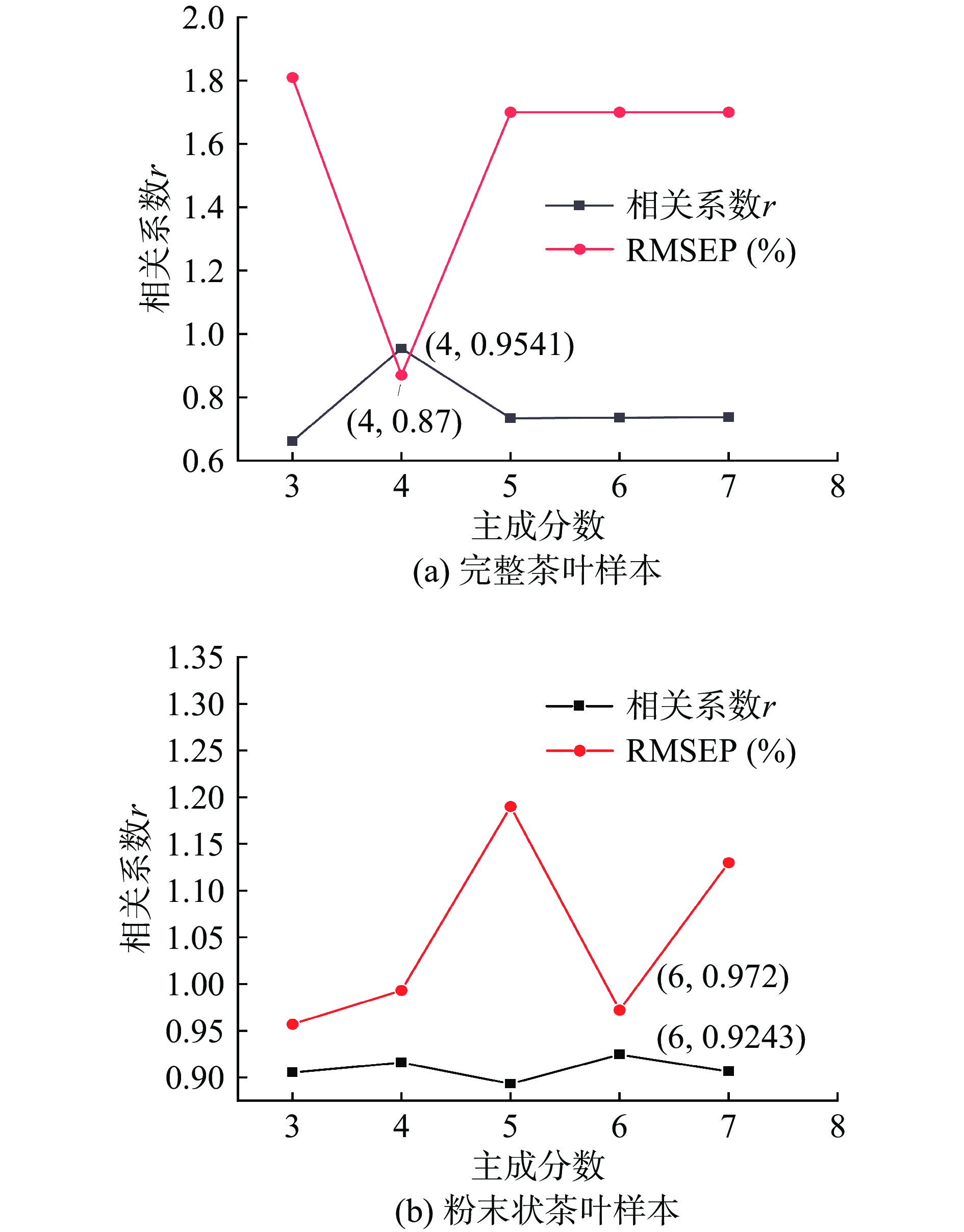
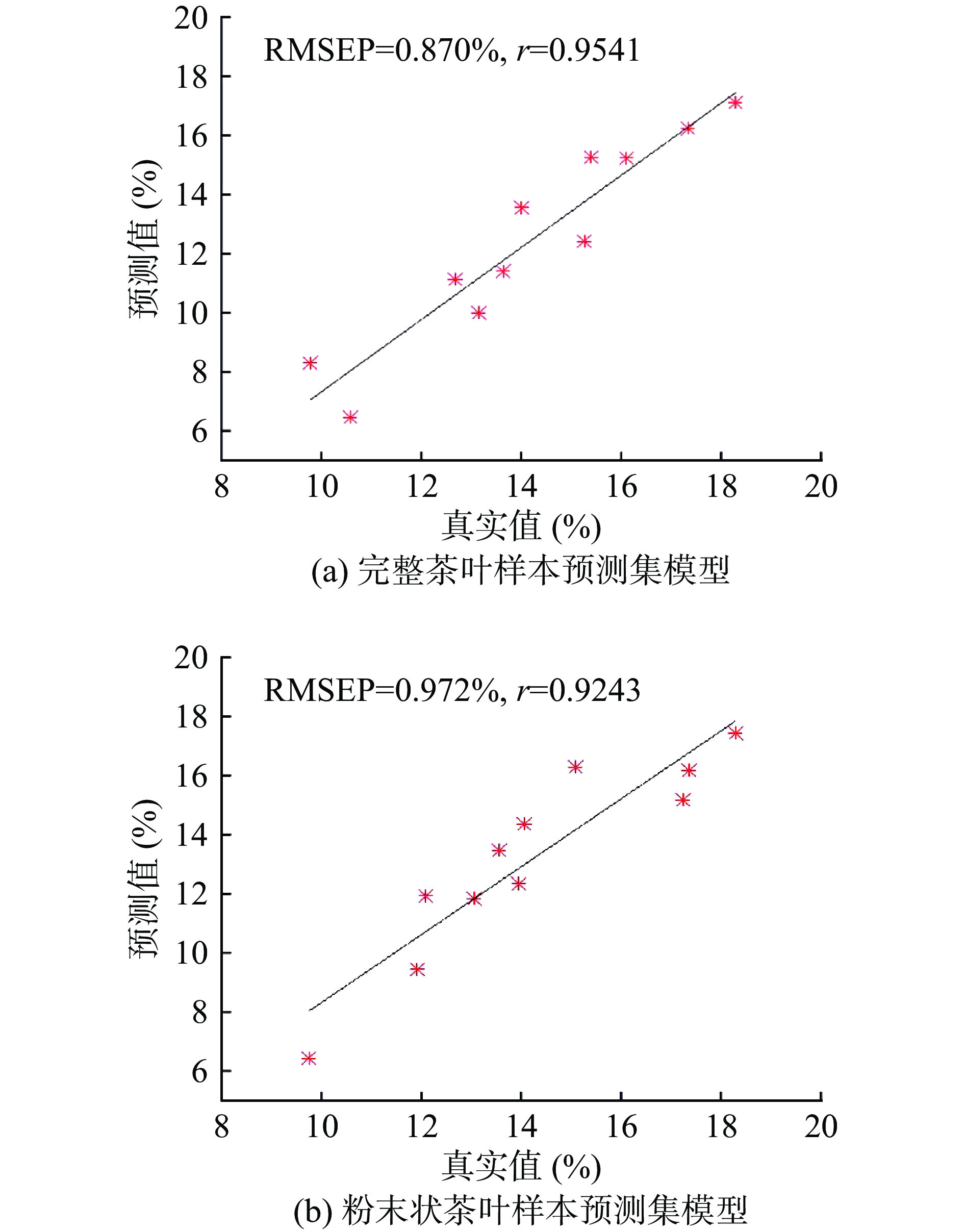
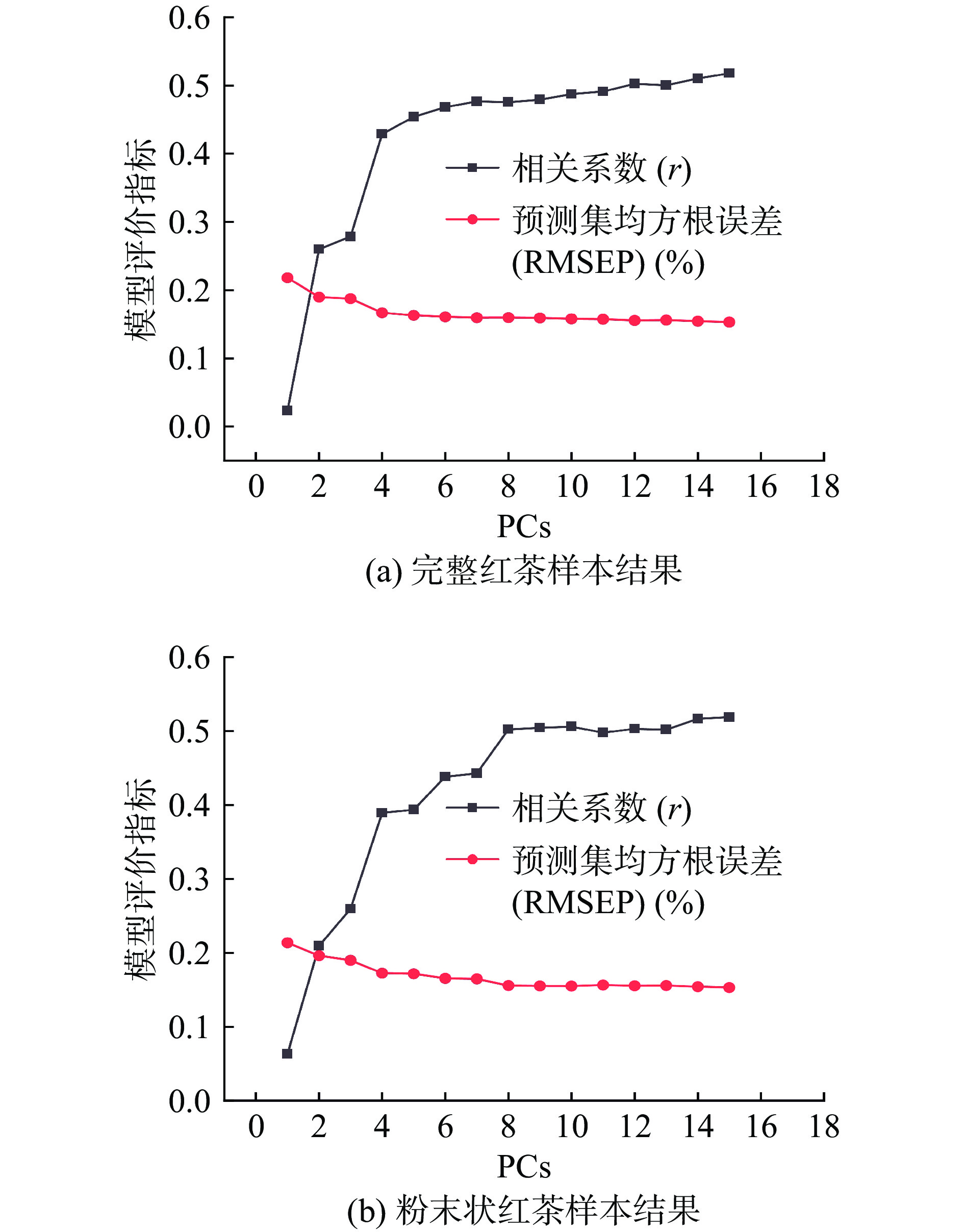
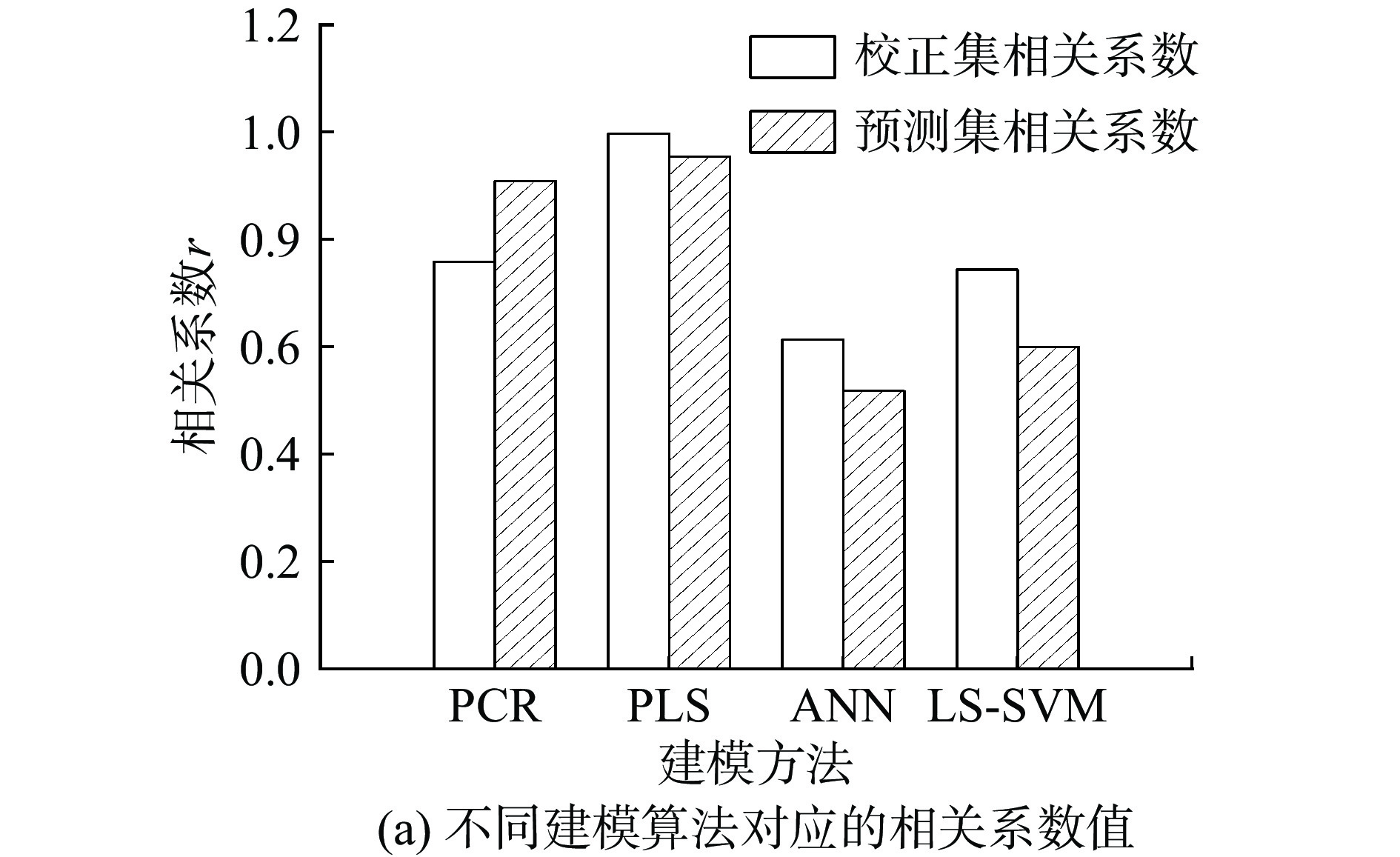
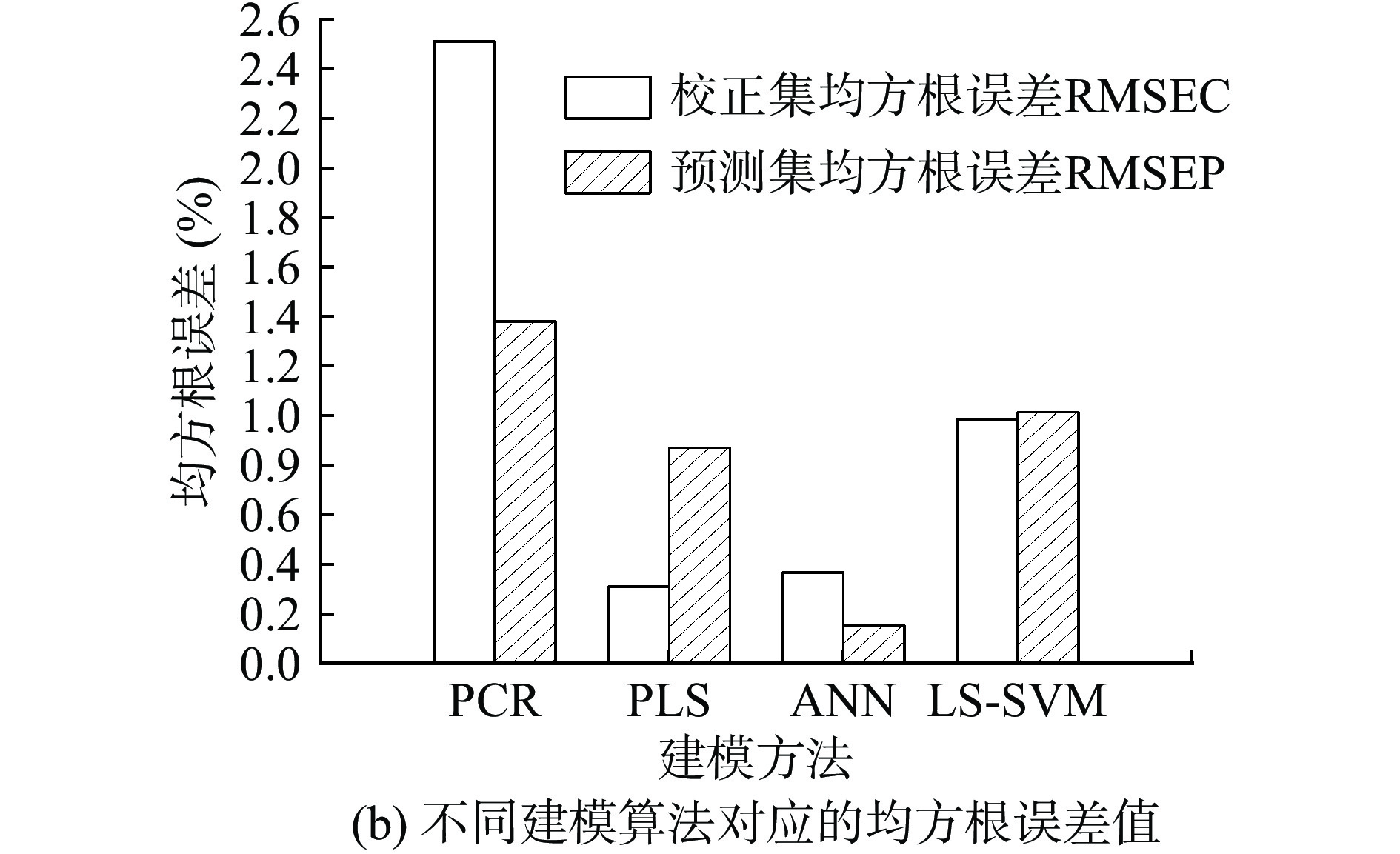
 下载:
下载:



